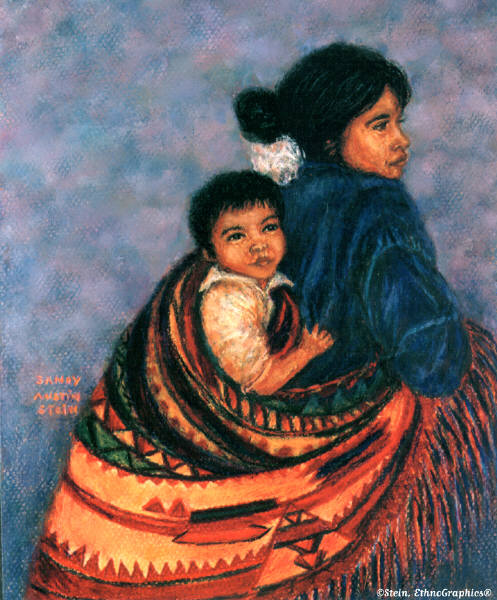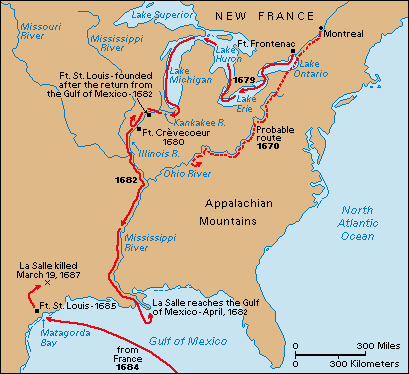

History 4110 MacKay Summer 2005
Unit 1 Heritage


May 16:
Activities:
- Defining yourself as a Westerner
Vale and Vale’s Eight Popular "Mental Images" of the Present-Day American West:
Empty Quarter: a Land to be Plundered and Exploited by Outsiders
Frontier: Mythic Home to the Exotic, the Wild, and the Rugged individual
Big Rock Candy Mountain: Land of Unbounded Opportunity for the Everyman; Bonanza/Eureka/Strike-it-Rich Country
Middle Landscape: A Harmonious World of Human Beings Living Within their Natural Environment; A Pleasant , Healthy Mix of Wilderness and Civilization; The Garden
Turnerian Progression: Place for the Steady Evolution of Human Society Towards Urban Civilization
Desert : Fragile, Vacant, Arid Land
Protected Wild Nature: National Parks and Other Monuments of Spectacular Examples of Natural History
Playground: Venue for Outdoor Recreation
Source: Thomas R. Vale and Geraldine R. Vale, Western Images, Western Landscapes: Travels Along U.S. 89 (Tucson: University of Arizona Press, 1989). See their 1994 article "Where is the American West?": http://homepage.smc.edu/morris_pete/papers/aag1994.pdf
- Become familiar with course web page.
- Students will be assigned to explore and report on various web sites in history of the West. Report orally: May 17. You may also choose to write up your analysis of the web site as short response paper # 1.
Due May 18- Students will explore recent scholarship in the history of the American West by working with an article of their own choosing from the Western Historical Quarterly -- accessible through JSTOR.
Report orally: May 18.
You may choose to also write your comments as short response paper #2. Due: May 18- Students will explore issues pages.
- Take the Quiz on the PBS The West site
Tribal Lands at the Time of Contact (From Encyclopedia of North American Indians)
James H. Merrell, The Indians' New World: Catawbas and Their Neighbors from European Contact through the Era of European Removal (Chapel Hill: University of North Carolina Press, 1989); Daniel Richter, The Ordeal of the Longhouse: The Peoples of the Iroquois League in the Era of European Colonization (Chapel Hill: University of North Carolina Press, 1992); Richard White, The Middle Ground: Indians, Empires, and Republics in the Great Lakes Region, 1650-1815 (Cambridge: Cambridge University Press, 1991).
Major Trade Routes (From the Encyclopedia of North American Indians)
William E. Meyer, Indian Trails of the Southeast Bureau of American Ethnology, Forty-second Annual Report (Washington: Government Printing Office, 1928); William R. Swagerty, Handbook of North American Indians "Indian Trade in the Trans-Mississippi West to 1870," ed. William C. Sturtevant, vol. 4, History of Indian-White Relations, ed. Wilcomb E. Washburn (Washington: Smithsonian Institution, 1988); Helen Hornbeck Tanner, Powhatan's Mantle: Indians in the Colonial Southeast "The Land and Water Communications Systems of the Southeastern Indians," ed. Peter H. Wood, Gregory A. Waselkov, and M. Thomas Hatley (Lincoln and London: University of Nebraska Press, 1989).
May 17:
Readings:
- Oxford: Introduction, Section I essays by Milner, Iverson
- Hine and Farager: Chapter 1
- White essay "Other Wests"
- PBS The West episode 1
- Map of Native Tribes-pre contact/ interactive
Activities:
- Discussion of readings
- short paper #2: What is White's argument/thesis? How does he make his case? Due: May 18
Map courtesy of the Perry-Castenada Library Map Collection of the University of Texas at Austin.


The explorations of Sieur de La Salle through North America strengthened France's hopes for a great empire in the New World. La Salle claimed the Mississippi River Valley for France. (From: The World Book)
May 18:
Readings:
- Oxford: essays by Weber and West
- Coronado expedition
Activities:
The Frontier--both the shifting places defined as the frontier and changing concepts of the frontier--has come to define for subsequent generations of Americans who "we" are and who is "over there" on the other side.
- Discussion of readings
- short paper #4: How could it be argued that the West is a "borderlands" not a "frontier"? Due: May 24
From the beginnings of Puritan settlement, English settlers established the "pale," a line which divided their own communities from what was "beyond the pale": a nature which may have been the province of evil as well as Native populations who were thought of and dealt with in a variety of ways.
The frontier as place and as process emerges as powerful themes in American culture-- think, for example, of James Fenimore Cooper's The Last of the Mohicans, the Western dime novel, Mark Twain's Roughing It, Henry Nash Smith's The Virgin Land, Theodore Roosevelt's memoirs of life as a cowboy, or the films of John Ford. By the end of the nineteenth century, Frederick Jackson Turner's delineation of the Frontier Thesis provided a definition of what made Americans "American." Turner argued that encounters with wilderness on the frontier--and its human analogies, Native Americans--transformed Europeans into Americans. Not surprisingly, this definition of "American exceptionalism" emerged in other forms, through Western films, cowboy culture, and even in the Space Race and in American foreign policy.
More recently there has been a pointed examination of the impact of the Frontier idea on American ideology. This has especially focused on Turner's thesis, whose delineation of the frontier as a "line between civilization and savagery" is certainly problematic in a pluralistic society made up of people from both sides of that "line." In recent studies of America, scholars have discussed the role of the "borderland"--the region of interaction between varied communities--in shaping the nation; borderlands can be geographic as well as intellectual, and can be zones of interaction, cultural exchange, and contestation.
(See: Catherine Lavender's Honors Seminar, 2000 Honors Seminar, 2000)